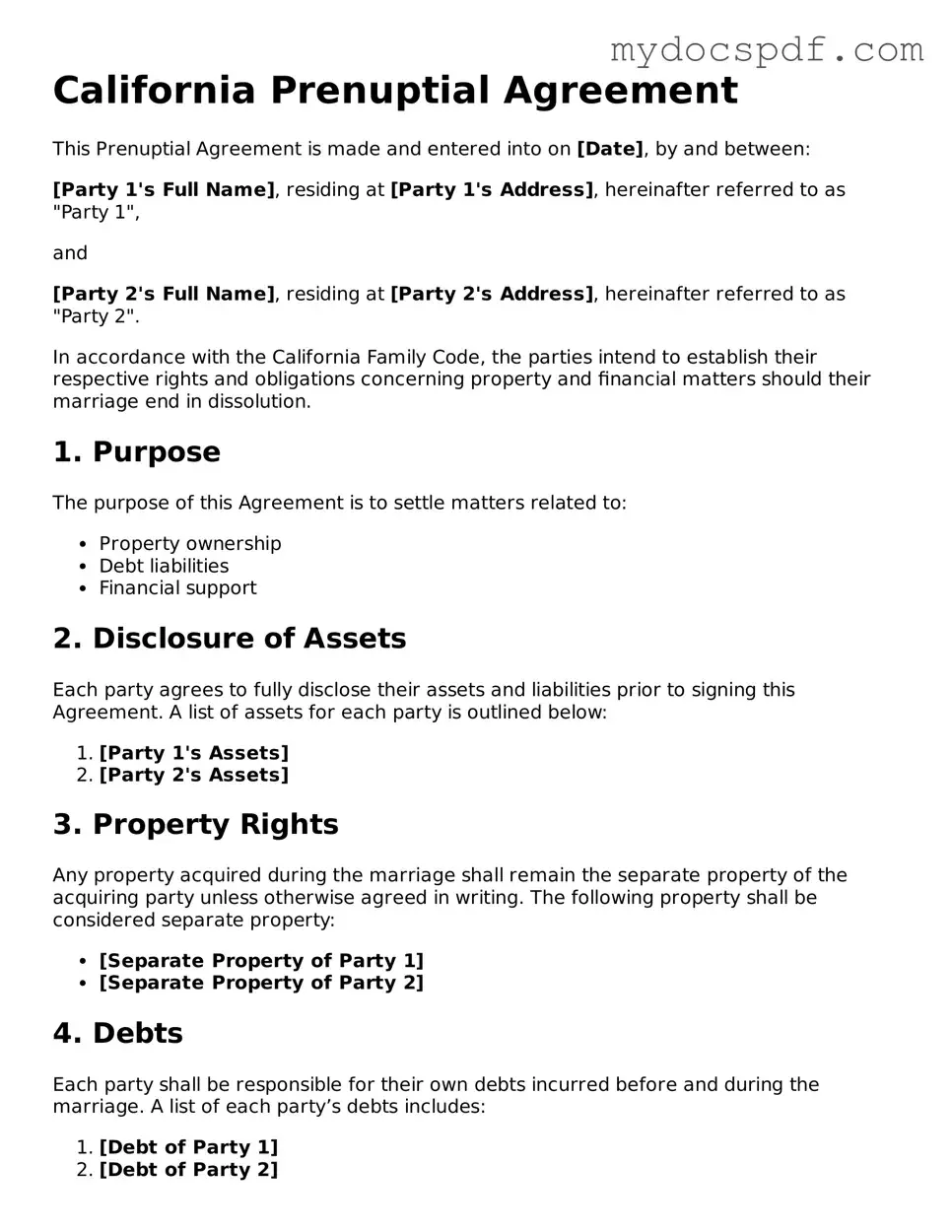California Prenuptial Agreement
This Prenuptial Agreement is made and entered into on [Date], by and between:
[Party 1's Full Name], residing at [Party 1's Address], hereinafter referred to as "Party 1",
and
[Party 2's Full Name], residing at [Party 2's Address], hereinafter referred to as "Party 2".
In accordance with the California Family Code, the parties intend to establish their respective rights and obligations concerning property and financial matters should their marriage end in dissolution.
1. Purpose
The purpose of this Agreement is to settle matters related to:
- Property ownership
- Debt liabilities
- Financial support
2. Disclosure of Assets
Each party agrees to fully disclose their assets and liabilities prior to signing this Agreement. A list of assets for each party is outlined below:
- [Party 1's Assets]
- [Party 2's Assets]
3. Property Rights
Any property acquired during the marriage shall remain the separate property of the acquiring party unless otherwise agreed in writing. The following property shall be considered separate property:
- [Separate Property of Party 1]
- [Separate Property of Party 2]
4. Debts
Each party shall be responsible for their own debts incurred before and during the marriage. A list of each party’s debts includes:
- [Debt of Party 1]
- [Debt of Party 2]
5. Spousal Support
The parties may agree upon terms regarding spousal support. Such terms include:
6. General Provisions
This Agreement shall remain in effect until amended or revoked in writing by both parties. It is governed by the laws of the State of California.
7. Signatures
By signing below, both parties confirm that they have read this Agreement thoroughly and understand its contents.
__________________________
[Party 1's Full Name]
Date: [Date]
__________________________
[Party 2's Full Name]
Date: [Date]
